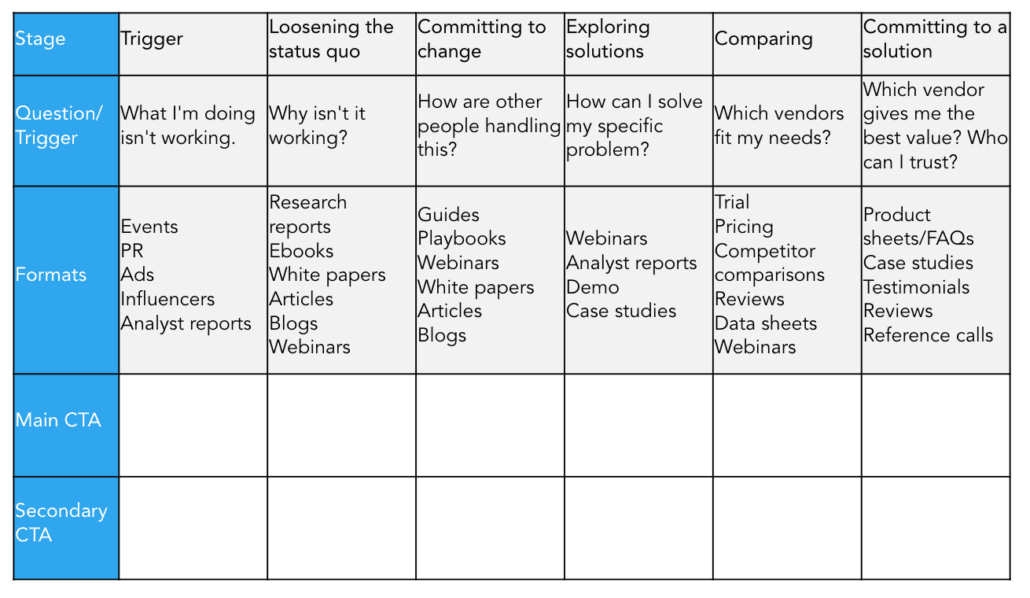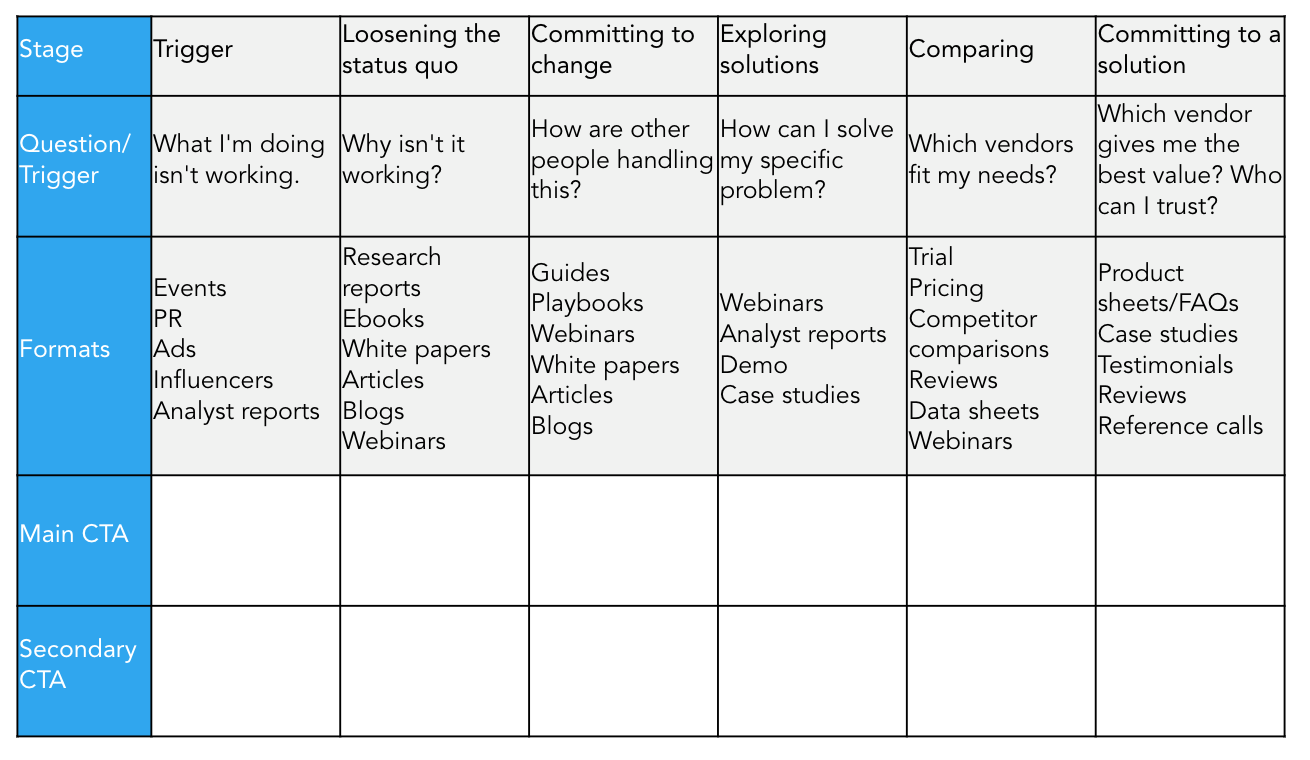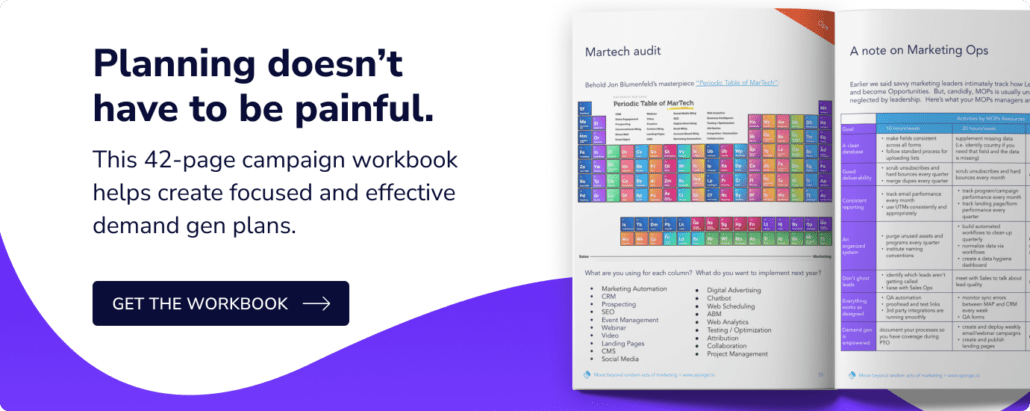One of the biggest mistakes I see in B2B demand gen is “waiting” for new white papers. First of all, you’ll be waiting for months! Worse, content marketing is about anticipating your buyer’s questions in the formats they trust most. And that’s almost never white papers. ::sad trombone::
So, instead of wishing for 14 new white papers, create a content campaign plan that relentlessly repackages and distributes a few core assets.
>> Related: How to Create an Annual Marketing Plan <<
In this post:
A typical content distribution plan
We want to exhaust our content, and distribute it across every channel we have:
- Create forms and thank you pages (with secondary CTAs of course)
- Add the form page to the resources section of the website
- Create a stat/quote image series for social (3-5 posts)
- Write a dedicated SalesLoft template to generate form fills
- Sprinkle the CTA across SalesLoft templates/cadences
- Write an SEO-ed blog series (5-9 total) and embed the CTA
- Cross-link from other blogs
- Add to nurture email series
- Add to email newsletter
- Recap (or debate) the content in a live webinar (ideally with a 3rd party). You’ll need a new LP and email invites to promote the webinar.
- Host the recording as an on-demand webinar with a new LP and email promo
- Edit a teaser video, SEO it, and post on YouTube
- Transcribe the webinar and create new blogs from it.
- Consider paid content syndication for the download and the on-demand webinar
- If you were able to incorporate a 3rd party into your webinar, consider pitching the press to interview them on this important topic
It is, admittedly a lot of moving pieces. But every ounce of subject matter expertise gets used, and you thoroughly saturate the market with a consistent message. If you’re intimidated by this spider web of content, repackage just one piece of content a quarter.
The benefits of a content distribution engine
Content distribution is more complex, but far easier:
- You don’t need a SME to repackage content you’ve already written
- Goodbye writer’s block!
- These are cheap projects for freelance writers and SEO consultants
- These are easy projects for junior content marketers
- You can generate leads within a week (instead of waiting 2 months to write and design another ebook)
- And you get wider distribution across social, email, YouTube, and SEO… and therefore more eyeballs and leads
But what content do I actually need?
Now that I’m done ranting about repackaging, it’s time to identify the formats buyers want to read, and the questions they’re trying to answer.
Longform content is like a Thanksgiving meal. It’s special! But serving that every day is also ridiculous. Content is similar – people want snacks, bites, meals, buffets, etc. Variety is important, and so is the context. Linking to a dense 90-minute recorded webinar during the first outbound email is off key. So is sending a dopey infographic to someone about to sign their contract.
Use this content marketing plan to map a buyer’s journey for each campaign. You only need a handful of assets (and secondary CTAs can just be blog posts):

Then map their readiness. In essence, we’re trying to understand how quickly we could launch:

Then find your people. You’re going to be out of your silo and partnering with Marketing Ops, designers, social managers, and whoever else you need. If you’ve previously spent $40k+ on analyst reports, repurpose that budget for freelancers who can help you recut, redesign, and optimize your content.
Then get started, and use a project management tool like Asana.
And lastly, don’t forget to report on your [inevitable] success with Campaign Source and Campaign Influence reports. You’ve got this!





